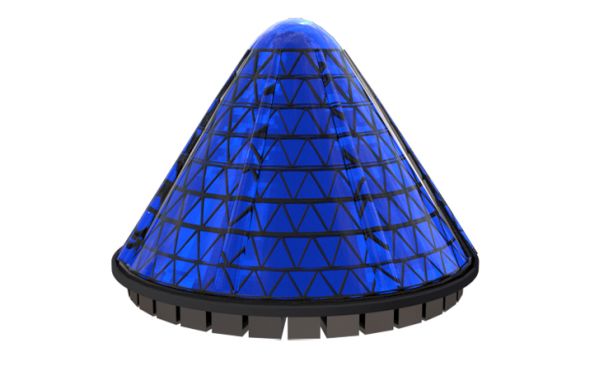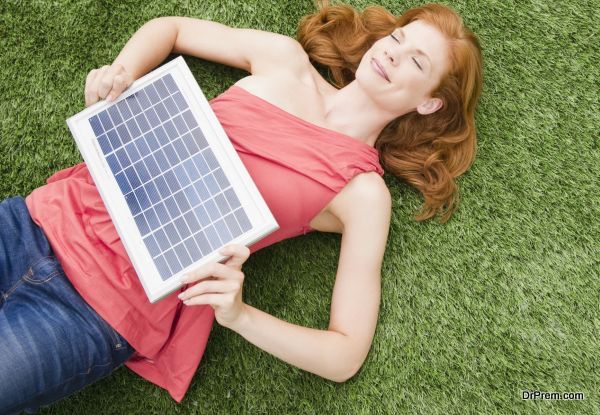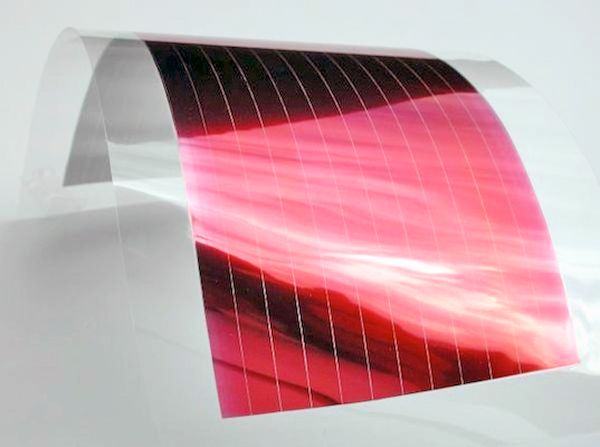Solar panels have been around for quite some time now. Talk about solar panels and the first images you get in your mind are rows upon rows of flat solar panels arranged in an area that receives plenty of sunshine the year around. However, recent developments in the field have given rise to a new form of solar panels that deviate drastically from their flat counterparts by taking on myriad shapes and sizes. Take a look at some of these developments that could literally change the way solar panels will be viewed in the near future.
V3Solar’s spin cell

The V3Solar’s Spin Cell concept design is a sharp contrast to the flat, rigid solar panel design we are so used to seeing. The V3Solar’s Spin Cell takes on a conical shape and can easily generate 20 times more electricity than standard solar panels. The solar panel uses an appropriate combination of concentrating lenses and advanced electronics along with a dynamic spin technology to make this possible.
Set at an angle of 56% to harness the sun’s energy, the V3Solar’s Spin Cell can capture the sun’s light at different angles throughout the year. The solar panel on the top of the cone absorbs the sun’s heat and transmits it to PV cells located beneath the cone. The inner core is spun continuously to avoid shedding heat on one particular area. The movement of the PV layer in and out of the light creates a dynamic shutter effect that is used to excite electrons and capture the energy the latter produce.
Inexpensive, paper thin solar cells

Solar panels were considered very expensive at one point of time. Thanks to recent developments in the field though, they are becoming cheaper and easier to gain access to. Enter the extremely affordable solar cell panel which is paper thin and can be easily printed out of an industrial printer.
These reed thin solar panels are extremely flexible as well, making transportation and handling all the more easier. A single solar cell film measuring 10×10 cm can produce a power output of at least 15 watts per square meter.
Perovskite solar cell

A Korea based researched team has developed highly efficient solar cells with the help of an abundantly occurring natural materials; perovskite structures. These structures when combined with the solar cells, increase the latter’s efficiency by at least 18%, thus creating a high performance solar cell that is extremely energy efficient as well as extremely affordable.
Solar cells with 40% conversion

Researchers at UNSW’s Center for Advanced Photovoltaics have created a solar panel that has managed to achieve an electricity conversion rate of 40%. The project involved treating commercial solar cells in a new way in order to improve their efficiency. The design facilitating the same features a custom optical bandpass filter that uses sunlight otherwise wasted by standard solar panels. The new design will absorb the sunlight and convert it into electricity at a much higher conversion rate.
Use of fluorescent dyes

Scientists at Yale University have found out a way to improve the efficiency of solar cells by introducing them to fluorescent organic dyes. When added to the cell layer, the dyes were able to boost the solar cell’s ability to absorb light as well as convert it to electricity.
The tests were conducted on polymer solar cells that are usually considered appealing for their low weight and cost as well as their enhanced mechanical flexibility.
However, these cells are not that efficient in absorbing light and converting it into electrical energy. This is taken care of by introducing a squaraine dye to the cells which increased their energy conversion efficiency by at least 38%.
Since their inception, solar panels have always stuck to their rigid, flat designs. Recent developments however, have led to the rise of ultra-flexible solar panels that can offer a higher power conversion efficiency than standard solar panels.



